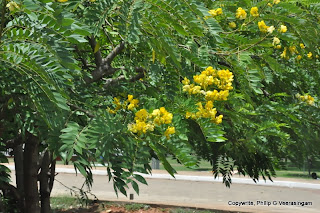Monday, December 2, 2013
Sunday, December 1, 2013
The 'Alms Hall' of the Mahavihara sect, Anuradhapura, Sri Lanka.
 |
| Guard-stone at the entrance to the 'Alms Hall'. |
 |
| A stone 'rice bowl' which was filled with boiled rice and was used to feed around 3000 Buddhist monks in the 2nd Century BC. |
'Over much of the early history of
Buddhism in Sri Lanka, three subdivisions of Theravāda existed in Sri Lanka,
consisting of the monks of the Mahāvihāra, Abhayagiri Vihāra, and the Jetavana Vihāra.[2]Mahāvihāra
is the first tradition to be established, while Abhayagiri Vihāra and Jetavana
Vihāra is established by monks who separated from Mahāvihāra tradition.[2] According to A.K. Warder, the Indian Mahīśāsaka sect also established itself in Sri
Lanka alongside the Theravāda, into which they were later absorbed.[2] Northern regions of Sri Lanka also
seem to have been ceded to sects from India at certain times.[2]
According
to the Mahavamsa, the Mahavihara
was destroyed during sectarian conflicts with the Theravada monks of the Abhayagiri
Vihara during the 4th
century.[3] These Mahayana monks incited King Mahasena to destruct the Mahavihara. As a
result of this, a later king expelled the Mahayana monks from Sri Lanka[citation
needed].
The
traditional Theravadin account provided by the Mahavamsa stands in contrast to
the writings of the Chinese Buddhist monk Faxian (Ch. 法顯), who
journeyed to India and Sri Lanka in the early 5th century
(between 399 and 414 CE). He first entered Sri Lanka around 406 CE and began
writing about his experiences in detail. He recorded that the Mahavihara was
not only intact, but housed 3000 monks. He also provides an account of a
cremation at Mahavihara that he personally attended, of a highly respected śramaṇa who attained the arhatship.[4] Faxian also recorded the concurrent
existence of the Abhayagiri Vihara, and that this monastery housed 5000 monks.[5] In the 7th century CE, Xuanzang also describes the concurrent
existence of both monasteries in Sri Lanka. Xuanzang wrote of two major
divisions of Theravāda in Sri Lanka, referring to the Abhayagiri tradition as
the "Mahāyāna Sthaviras," and the Mahāvihāra tradition as the "Hīnayāna Sthaviras."[6] Xuanzang further writes:[7]
The Mahāvihāravāsins reject the
Mahāyāna and practice the Hīnayāna, while the Abhayagirivihāravāsins study both
Hīnayāna and Mahāyāna teachings and propagate the Tripiṭaka.'
Saturday, November 30, 2013
Friday, November 29, 2013
'Sri Maha Bodhi', Anuradhapura, Sri Lanka.
 |
| The 'Makara' emblem used to line a stairway of an old building at the site. |
'The makara has the trunk of an elephant, the feet of a lion, the ears of a pig, the body of a fish living in water, the teeth turned outwards, eyes like Hanuman's, and a splendid tail'. -'Mediaeval Sinhalese art' by Ananda K Coomaraswamy (1908)
 |
| Water lily flowers awaiting sale to the devotees. |
 |
| Buds of water lilies. |
 |
| Flowers on a tree in the premises. |
Thursday, November 28, 2013
'Sri Maha Bodhi', Anuradhapura, Sri Lanka.
 |
| The entrance to the site. |
 |
| An ancient 'Guard-stone' chiselled out of granite.. |
 |
| Devotees offering fresh flowers. |
 |
| The sacred 'Bo tree' with a fence of gold railings. |
After bringing Buddhism to Sri Lanka by
Mahinda Thero in 250 BC Emperor Asoka in India sent his daughter Theri
Sanghamitta to the island with a branch of the Sacred Bodhi obtained from the
main stem of the bodhi tree in Bodh Gaya under which Buddha attained
enlightenment. The king Tissa received the sapling and planted it at the
present site in 249 BC. Taking this information to account today (in 2013) the Sri Maha Bodhitree
is exactly 2263 years old. Thus this tree is the oldest tree in world in the
recorded history.
Wednesday, November 27, 2013
Tuesday, November 26, 2013
Subscribe to:
Posts (Atom)



















